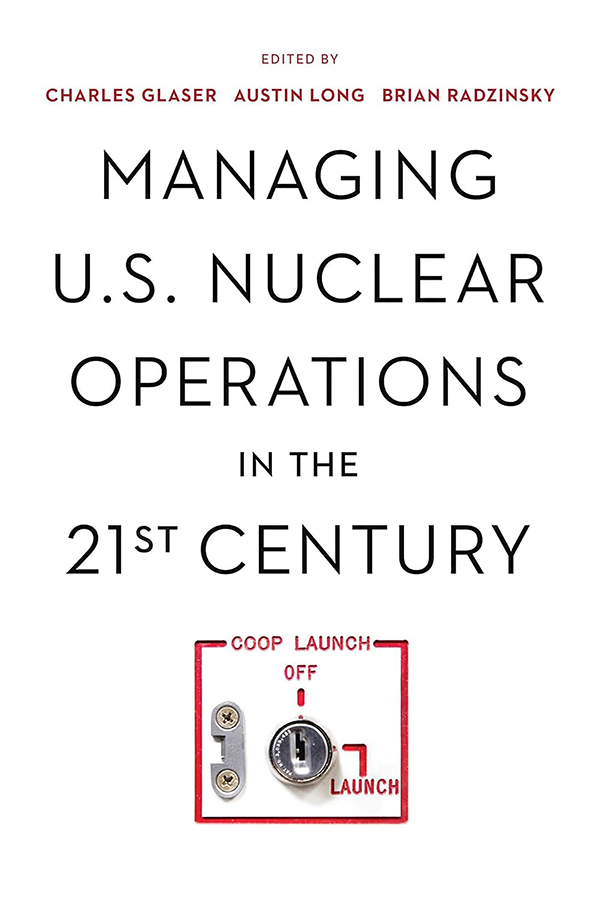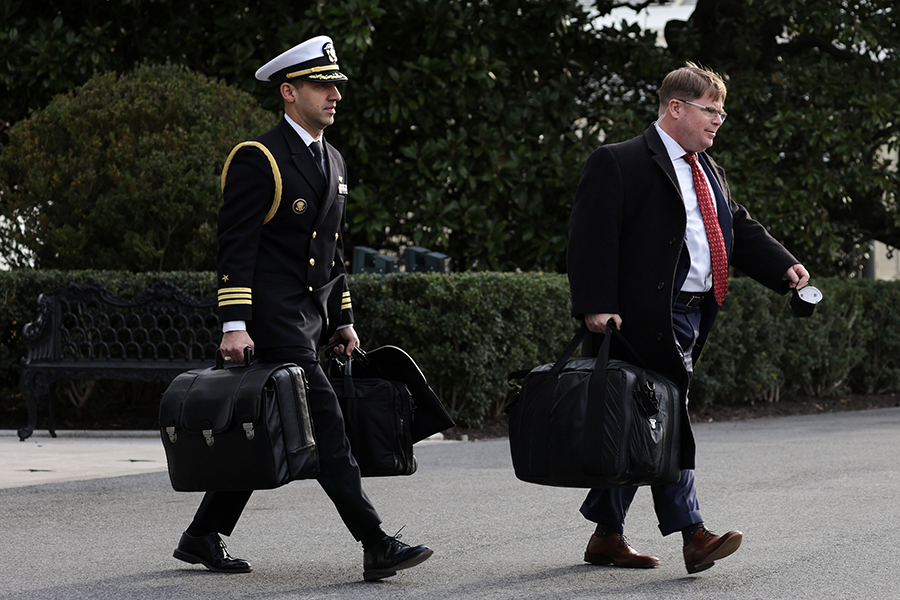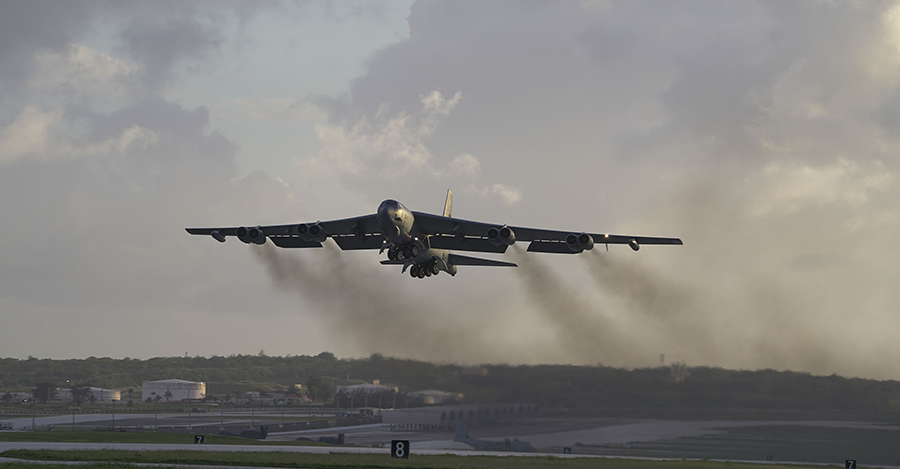Managing U.S. Nuclear Operations in the 21st Century
October 2023
A New Touchstone for Discussing U.S. Nuclear Policy

Managing U.S. Nuclear Operations in the 21st Century
By Charles Glaser, Austin Long, and Brian Radzinsky, eds.
Brookings Institution
October 2022
Reviewed by Amy F. Woolf
The original volume of Managing Nuclear Operations, published by the Brookings Institution in 1987, served as an anchor on many bookshelves in the U.S. nuclear weapons community and became an irreplaceable source for the details of U.S. nuclear operations. Its comprehensive review of the U.S. nuclear force posture provided thorough and unclassified insights into the policies, processes, and technologies used to develop and implement U.S. nuclear war plans.
A few years after the book’s publication, the Soviet Union collapsed, and the Cold War ended. The United States and the Soviet Union and then Russia signed arms control treaties and implemented unilateral measures that reduced their numbers of deployed nuclear weapons. With the Clinton administration’s 1994 Nuclear Posture Review (NPR), the United States began to reconsider the shape of its nuclear arsenal and the role of nuclear weapons in its national security strategy. Additional reviews in subsequent administrations further refined U.S. nuclear policy, programs, and force structure. Published reports explained many of the assumptions and recommendations of these studies, but the changes adopted in U.S. nuclear operations often remained opaque. Outside government, think tanks and advocacy groups engaged in debates about the strategy, size, and shape for the U.S. nuclear arsenal and offered their own recommendations.
As Charles Glaser and Brian Radzinsky note in their introduction to Managing Nuclear Operations in the 21st Century, many of the topics addressed in the original volume remain relevant to the ongoing debates. Although the United States has maintained a measure of consistency in some of the foundational concepts of its nuclear strategy, it has adopted significant changes in the processes used to develop U.S. targeting and employment plans; in the policies governing the acquisition, maintenance, and use of nuclear weapons; and in the technologies that might support or impinge on nuclear operations.
The new volume offers insights into many of these changes. In addition, with chapters written by officials who have served inside the nuclear enterprise since the late 1980s, the volume captures the personal reflections of many of the participants in the process used to review and alter U.S. nuclear operations after the Cold War. With fewer chapters that focus exclusively on technology and the processes used to implement nuclear operations, this book lacks some of the depth and detail that made the original volume unique and valuable for the research community. Nevertheless, several chapters serve a similar purpose in educating readers on the basics of nuclear planning and operations. For example, Michael Elliot describes the analytic and bureaucratic processes used to translate broad policy statements into the specific targeting and employment options included in the nuclear war plan. John Harvey and John Warden describe the technologies and processes used to detect an incoming attack, assess the size and scope of the attack, support the president’s deliberations and decision to retaliate in response to that assessment, and swiftly execute that decision.
The volume’s contributors recognize that analysts outside government have offered alternatives to the current U.S. nuclear posture and nuclear operations. In some chapters, they seem to debunk the outsiders’ assumptions and disagree with their conclusions. For example, several authors describe the complexity of U.S. nuclear planning and explain the range of considerations that determine how many and which weapons are assigned to different types of targets. This explanation contrasts with outside recommendations for changes in the U.S. force structure that seem to assume that nuclear targeting is an exercise in simple arithmetic. Several chapters review the role of “launch on warning” in U.S. strategy. The authors explain why the president has the option to order a prompt launch of U.S. weapons and dispute the view that such options increase the risk of an inadvertent or accidental launch of nuclear weapons.
 In the volume’s first chapter, Glaser and Radzinsky provide a basic overview of nuclear deterrence, with a focus on the role that the credibility of deterrent threats plays in a successful deterrence strategy. They describe the types of nuclear delivery systems in the U.S. force posture and highlight how the survivability of U.S. weapons and U.S. command and control systems helps maintain a credible deterrent. They explain that limited nuclear options, which envision proportionate responses to attack and the possibility of restoring deterrence after a nuclear exchange, have been included in U.S. nuclear strategy since the 1960s and are a part of the effort to bolster the credibility of deterrence. This contrasts with public discussions that often suggest these options support a war-fighting doctrine rather than a deterrence posture that promises retaliation after an attack.
In the volume’s first chapter, Glaser and Radzinsky provide a basic overview of nuclear deterrence, with a focus on the role that the credibility of deterrent threats plays in a successful deterrence strategy. They describe the types of nuclear delivery systems in the U.S. force posture and highlight how the survivability of U.S. weapons and U.S. command and control systems helps maintain a credible deterrent. They explain that limited nuclear options, which envision proportionate responses to attack and the possibility of restoring deterrence after a nuclear exchange, have been included in U.S. nuclear strategy since the 1960s and are a part of the effort to bolster the credibility of deterrence. This contrasts with public discussions that often suggest these options support a war-fighting doctrine rather than a deterrence posture that promises retaliation after an attack.
Several authors reflect on the question, often central to public debates over U.S. nuclear strategy, of whether the United States should pursue a purely retaliatory deterrence strategy or a counterforce approach that would target military capabilities to limit damage to the United States. Franklin Miller argues that this debate has never animated U.S. nuclear planning because U.S. plans have always included a mix of military, leadership, and industrial targets. James Miller notes that, even after the Obama administration’s review of employment guidance, the United States did not adopt a countervalue, minimum deterrence strategy. U.S. employment guidance continues to focus on holding at risk an adversary’s relevant military targets.
Several of the volume’s authors highlight the value of civilian-military cooperation in developing nuclear targeting and employment plans. Franklin Miller notes that such collaboration during the late 1980s demonstrated that “a collegial dialogue involving policymakers and target planners was hugely beneficial” not only in the development of more rational targeting and employment plans, but also in the development of working relationships that helped the United States adjust its nuclear posture in an era of striking change in the international security environment. James Miller notes that the Obama administration’s review allowed for “serious discourse among knowledgeable civilians and military personnel” and that the process was successful because it was conducted by a small group of “like-minded people” committed to reviewing strategy and assessing military requirements before developing proposals for arms control reductions. Elliot also acknowledges the value of civilian-military cooperation, noting that the “the habitual relationship developed among key leaders…during development of policy and subsequent plan review activities are key to this outcome.”
Several authors emphasize that U.S. arms control proposals have represented an outcome from, not an input to, changes in nuclear strategy and targeting. Franklin Miller describes how a targeting review in the late 1980s determined that the United States could meet its deterrence requirements with 5,888 warheads, a result that advised the U.S. negotiating position in the talks on the Strategic Arms Reduction Treaty. He also argues that a reverse process that began with proposals to change nuclear strategy so that the United States could negotiate deeper reductions in arms control agreements would “undo the trust and confidence” between the military and civilian officials who work together to develop nuclear employment plans. James Miller offers a similar assessment, noting that the early stages of the Obama administration’s Nuclear Posture Review in 2009 reassessed U.S. nuclear requirements and validated that the United States could meet those requirements with 1,550 warheads, thus setting the force level negotiated in the New Strategic Arms Reduction Treaty. According to Miller, the civilians sought the best advice from the military on these force levels, but they did not pressure
the military to support a specific path to reductions.
 Linton Brooks notes that presidential guidance and the resulting nuclear employment plan set the force structure limitations acceptable in any given arms control treaty. Moreover, according to Brooks, from the standpoint of nuclear operations, a good arms control agreement is not necessarily one that lowers nuclear forces the most, but one that contributes to strategic stability and enables those forces to operate more safely and effectively.
Linton Brooks notes that presidential guidance and the resulting nuclear employment plan set the force structure limitations acceptable in any given arms control treaty. Moreover, according to Brooks, from the standpoint of nuclear operations, a good arms control agreement is not necessarily one that lowers nuclear forces the most, but one that contributes to strategic stability and enables those forces to operate more safely and effectively.
Several authors offered their views on why civilian participation and oversight led to the successful revision of the U.S. nuclear war plan, reduced the requirements for nuclear weapons, and supported the negotiations of arms control treaties that codified those reductions. They assert that the process worked because the participants knew each other well and were all deeply knowledgeable about the issues at hand. In essence, the civilians from the U.S. Office of the Secretary of Defense and the military officers working in the planning process accepted each other as insiders in the nuclear weapons community. Experts with less conventional views about U.S. nuclear posture have found a less welcoming, less collaborative environment, thus limiting the range of alternatives that find their way into U.S. nuclear operations.
Several chapters address concerns about the policies and operations governing the launch of U.S. nuclear weapons. Central to these concerns is the belief that, by retaining weapons on alert and an option for the president to launch those weapons on short notice, the U.S. posture creates risks that ambiguities and misperceptions in attack assessments could lead to an inadvertent or mistaken launch. Elliot disputes this view, noting that preplanned options provide the president with the option to order a prompt launch but does not require such a response. Harvey and Warden note that this posture was designed to ensure that the United States could retaliate in the Cold War’s most stressful scenario if the Soviet Union launched a first strike but that this scenario is no longer the most likely path to nuclear war. Retired Air Force General Robert Kehler states that redundancy, resilience, and survivability ensure that an adversary cannot neutralize the U.S. nuclear deterrent by attacking command and control. Thus, the president would have time to consider options before choosing how and when to respond. Moreover, as Harvey and Warden note, the system would use two distinct types of sensors for launch detection and attack assessment, which would minimize the risk that a U.S. launch would be based on faulty warning or mistaken attack assessment.
Kehler also notes that U.S. targeting and employment plans are subject to legal review during their development to ensure that they are consistent with the requirements for necessity, distinction, and proportionality under the laws of armed conflict. On the issue of the president’s role in ordering the launch of nuclear weapons, he recognizes that some are uncomfortable with the president’s sole authority, but questions the implications of expanding command authority to include other decision-makers, concluding that the “chain of command is not a debating society.”
Elaine Bunn addresses an issue that has gained heightened visibility in recent years as the United States and its allies contend with regional security challenges. She reviews U.S. extended deterrence goals and operations, describing how NATO has elevated the role of nuclear weapons in its security architecture in the past decade and highlighting the need for the alliance to maintain this focus in the current fraught security environment. She offers details on the consultative process for nuclear operations in NATO and describes the consultative mechanisms used to extend deterrence and reassure allies in Asia. She notes that it is inherently difficult to maintain the credibility of extended deterrence. Although some have suggested that the United States deploy new types of weapons systems to support extended deterrence, Bunn argues that the political and security relationships between the United States and its allies are more important than the numbers and types of deployed weapons. She observes that, “to be assured, the allies must trust U.S. judgment, and, in the case of nuclear weapons, that comes down to trusting the President.”
Managing Nuclear Operations in the 21st Century provides a solid foundation for future conversations about alternative approaches to nuclear operations. It not only offers valuable information to those outside government who often rely on simplistic assumptions about current plans and processes, but also gives those who have worked inside government the opportunity to offer clear explanations in their defense of those policies and processes. Janne Nolan, who initiated the project that produced this volume and whose memory and legacy are recognized in its pages, would have encouraged both sides to engage in this dialogue with a respectful, fact-based, and collegial conversation. Continuing that conversation within the nuclear policy community would truly serve as a tribute to her memory.
Amy F. Woolf, a consultant in nuclear weapons and nuclear arms control policy, served for more than 30 years as a specialist at the Congressional Research Service of the U.S. Library of Congress focusing on U.S. and Russian nuclear weapons policy, the U.S. domestic politics of arms control, monitoring and verification of arms control agreements, and the future of U.S.-Russian arms control.
